-
 Bitcoin
Bitcoin $114400
1.32% -
 Ethereum
Ethereum $3499
2.20% -
 XRP
XRP $2.922
4.26% -
 Tether USDt
Tether USDt $0.0000
0.03% -
 BNB
BNB $752.6
1.53% -
 Solana
Solana $161.8
1.64% -
 USDC
USDC $0.9999
0.01% -
 TRON
TRON $0.3267
1.32% -
 Dogecoin
Dogecoin $0.1991
3.02% -
 Cardano
Cardano $0.7251
3.29% -
 Hyperliquid
Hyperliquid $38.32
3.36% -
 Stellar
Stellar $0.3972
7.58% -
 Sui
Sui $3.437
2.74% -
 Chainlink
Chainlink $16.29
3.65% -
 Bitcoin Cash
Bitcoin Cash $545.3
3.70% -
 Hedera
Hedera $0.2482
7.49% -
 Ethena USDe
Ethena USDe $1.001
0.03% -
 Avalanche
Avalanche $21.40
2.02% -
 Toncoin
Toncoin $3.579
1.56% -
 Litecoin
Litecoin $109.3
2.20% -
 UNUS SED LEO
UNUS SED LEO $8.951
-0.18% -
 Shiba Inu
Shiba Inu $0.00001220
2.75% -
 Polkadot
Polkadot $3.613
2.99% -
 Uniswap
Uniswap $9.173
3.78% -
 Monero
Monero $302.6
2.62% -
 Dai
Dai $0.0000
0.00% -
 Bitget Token
Bitget Token $4.320
1.52% -
 Pepe
Pepe $0.00001048
3.40% -
 Cronos
Cronos $0.1314
4.33% -
 Aave
Aave $259.4
3.54%
Staking mining details: Is an annualized return of 20% really reliable?
Staking mining offers passive income, but achieving a 20% annualized return is challenging due to factors like network inflation and validator fees.
May 27, 2025 at 02:49 pm
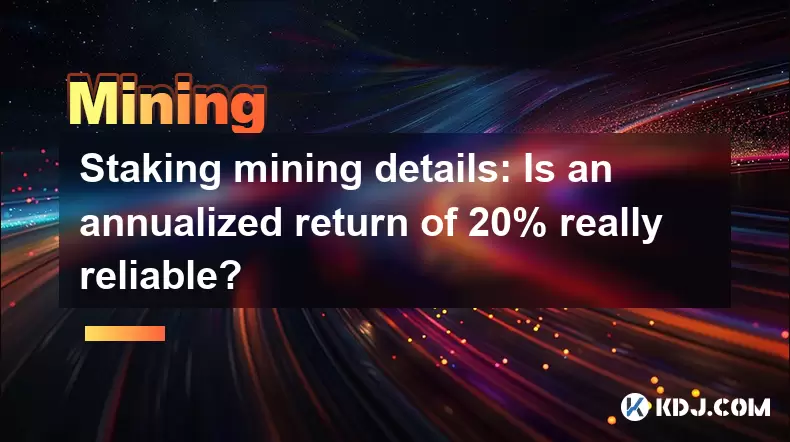
Staking mining has become an increasingly popular method for cryptocurrency enthusiasts to earn passive income. One of the most enticing aspects of staking is the promise of high annualized returns, often advertised at around 20%. But is this figure really reliable? In this article, we will delve into the details of staking mining, exploring the factors that influence returns and whether a 20% annualized return is achievable and sustainable.
Understanding Staking Mining
Staking mining involves holding and locking up a certain amount of cryptocurrency in a wallet to support the operations of a blockchain network. In return, participants receive rewards, typically in the form of additional cryptocurrency. This process is different from traditional mining, which requires significant computational power and energy consumption.
The concept of staking is rooted in Proof of Stake (PoS) consensus mechanisms, which are used by many modern blockchains as an alternative to Proof of Work (PoW). In a PoS system, validators are chosen to create new blocks based on the number of coins they hold and are willing to "stake" as collateral. This method is considered more energy-efficient and accessible to a broader range of participants.
Factors Influencing Staking Returns
Several factors can influence the annualized return you might achieve from staking. Understanding these elements is crucial to determining whether a 20% return is realistic.
Network Inflation Rate: The rate at which new coins are created and added to the network's total supply can significantly impact staking returns. If the inflation rate is high, the value of the rewards you receive might be diluted, reducing the effective return.
Validator Fees: When you stake through a third-party service or pool, the operator typically charges a fee for managing the staking process. These fees can range from 5% to 20% of the rewards earned, directly affecting your net return.
Staking Duration: Some networks offer higher rewards for longer staking periods. Locking up your assets for an extended time can increase your potential returns but also means you cannot access your funds during that period.
Network Performance: The overall health and performance of the blockchain network can influence staking rewards. Networks with high transaction volumes and demand for block space can offer higher rewards to validators.
Calculating Annualized Returns
To determine whether a 20% annualized return is feasible, it's essential to understand how these returns are calculated. The formula for calculating the annualized return from staking is:
[ \text{Annualized Return} = \left( \frac{\text{Reward Rate}}{\text{Staking Period}} \right) \times 100 ]
For example, if a network offers a 5% reward rate per annum, and you stake your coins for a year, your annualized return would be 5%. However, if you stake for shorter periods, the calculation becomes more complex due to compounding effects.
Real-World Examples of Staking Returns
Let's look at some real-world examples to see if a 20% annualized return is achievable in practice.
Ethereum 2.0: Ethereum's transition to a PoS consensus mechanism, known as Ethereum 2.0, has promised staking rewards. Early estimates suggested an annualized return of around 5-7%. However, these figures can vary based on the total amount staked and network conditions.
Cardano: Cardano offers staking through its Ouroboros protocol. The platform has historically provided annualized returns ranging from 4% to 6%. These returns are influenced by the total amount of ADA staked and the fees charged by staking pools.
Tezos: Tezos is another blockchain that supports staking, with annualized returns typically around 5-7%. The network's design allows for dynamic adjustment of rewards based on the total amount of XTZ staked.
The Reliability of 20% Annualized Returns
While some platforms and services advertise annualized returns of 20% or more, it's essential to scrutinize these claims. High returns are often associated with higher risks, and several factors can make such returns unreliable.
Volatility: Cryptocurrency markets are highly volatile, and the value of the rewards you receive can fluctuate significantly. A 20% return in a stablecoin might be more reliable than the same return in a highly volatile cryptocurrency.
Regulatory Risks: Changes in regulations can impact the legality and profitability of staking. Countries with strict regulations on cryptocurrencies might limit the potential returns or even ban staking altogether.
Network Changes: Blockchain networks can undergo updates and changes that affect staking rewards. A network might reduce its inflation rate or alter its reward structure, impacting the annualized return.
Service Reliability: If you are staking through a third-party service, the reliability of that service is crucial. Issues such as downtime, security breaches, or mismanagement can affect your returns.
Maximizing Staking Returns
To maximize your staking returns and potentially achieve a 20% annualized return, consider the following strategies:
Diversify: Staking across multiple networks can help spread risk and potentially increase overall returns. Different networks offer varying reward rates and conditions, allowing you to optimize your staking strategy.
Choose Low-Fee Services: Selecting staking services with low fees can significantly impact your net returns. Compare the fees charged by different providers and choose those that offer the best value.
Stay Informed: Keep up-to-date with changes in the networks you are staking on. Understanding upcoming updates and adjustments can help you adjust your strategy to maximize returns.
Long-Term Staking: If a network offers higher rewards for longer staking periods, consider locking up your assets for an extended time. This can increase your potential returns but requires careful planning to ensure you can afford to have your funds locked up.
Frequently Asked Questions
Q1: Can I lose my staked assets?
A1: While staking is generally considered safer than traditional mining, there are risks involved. If you are staking on a network that experiences a security breach or if you choose a validator that behaves maliciously, you could lose your staked assets. Always research the security measures of the network and the reputation of the validator or staking service you use.
Q2: How do I choose the right staking platform?
A2: When choosing a staking platform, consider factors such as the fees charged, the reputation of the service, the user interface, and the level of support provided. Look for platforms that have a proven track record of reliability and transparency. Reading reviews and seeking recommendations from other stakers can also be helpful.
Q3: Is staking taxable?
A3: The tax treatment of staking rewards varies by country. In many jurisdictions, staking rewards are considered taxable income and must be reported accordingly. It's essential to consult with a tax professional to understand your obligations and ensure compliance with local tax laws.
Q4: Can I stake on multiple networks simultaneously?
A4: Yes, you can stake on multiple networks simultaneously, provided you have the necessary cryptocurrency holdings. Staking on multiple networks can help diversify your investments and potentially increase your overall returns. However, managing multiple staking positions requires careful monitoring and planning.
Disclaimer:info@kdj.com
The information provided is not trading advice. kdj.com does not assume any responsibility for any investments made based on the information provided in this article. Cryptocurrencies are highly volatile and it is highly recommended that you invest with caution after thorough research!
If you believe that the content used on this website infringes your copyright, please contact us immediately (info@kdj.com) and we will delete it promptly.
- BCUT: Support Holds, Accumulation Hints at Potential Reversal
- 2025-08-04 10:50:12
- Bitcoin's Bullish Expansion: Decoding Bollinger Bands and Whale Bets
- 2025-08-04 10:55:12
- XRP, Solana, and Whales: Decoding the Crypto Tides
- 2025-08-04 11:10:11
- BlockDAG's Grand Finale: Auction Fever and the Dawn of a New Era
- 2025-08-04 10:30:12
- Kaia Files: Will South Korea Embrace a KRW-Pegged Stablecoin?
- 2025-08-04 10:30:12
- Kaspa, HBAR, and Cold Wallet: A New York Minute on Crypto's Latest Moves
- 2025-08-04 09:11:54
Related knowledge
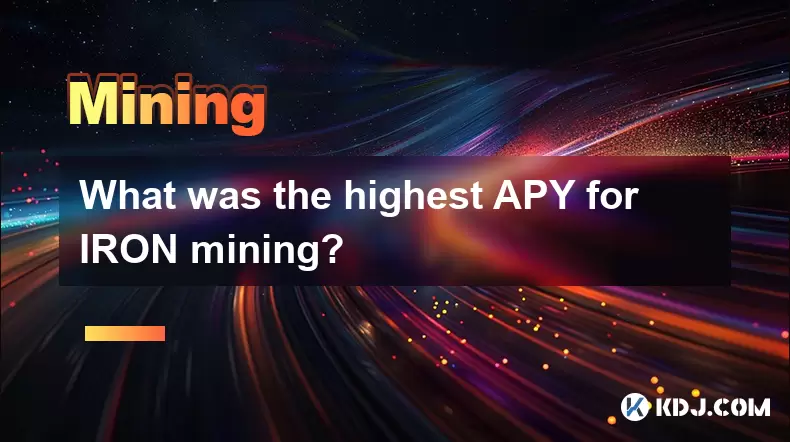
What was the highest APY for IRON mining?
Jul 23,2025 at 05:14am
Understanding IRON Token and Its Mining MechanismThe IRON token is a stablecoin that operates within the Iron Finance ecosystem, primarily on blockcha...

What is impermanent loss in IRON pools?
Jul 23,2025 at 09:00am
Understanding Impermanent Loss in the Context of IRON PoolsImpermanent loss is a phenomenon that affects liquidity providers in decentralized finance ...
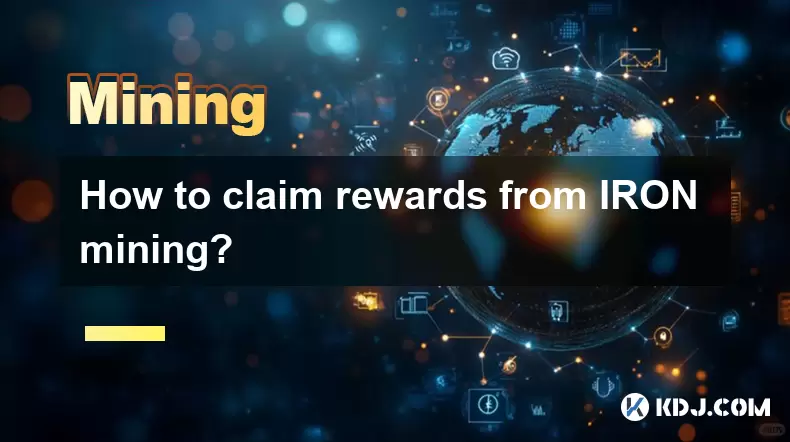
How to claim rewards from IRON mining?
Jul 23,2025 at 02:21pm
Understanding IRON Mining and Reward MechanismsIRON Finance operated as a decentralized finance (DeFi) protocol on the Polygon and Binance Smart Chain...
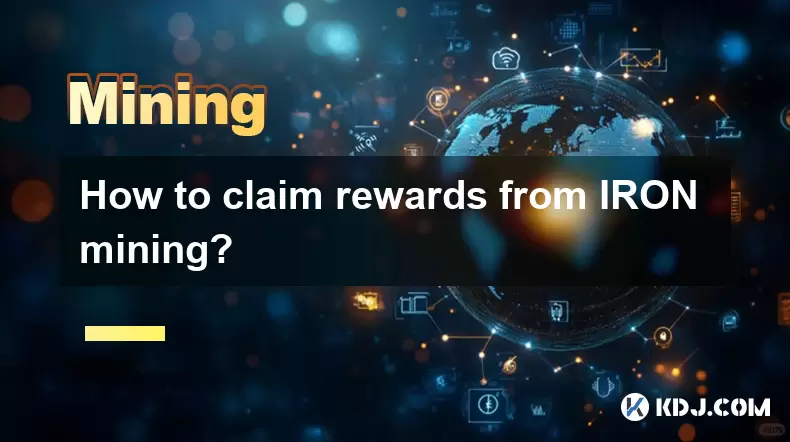
How to claim rewards from IRON mining?
Jul 29,2025 at 05:07am
Understanding IRON Mining and Reward MechanismIRON is a dual-token system designed to stabilize the value of a synthetic asset through a combination o...

IRON mining tutorial for beginners
Jul 27,2025 at 12:01am
What Is IRON and How Does It Work in the Cryptocurrency Ecosystem?IRON is a cryptocurrency token that operates on the Binance Smart Chain (BSC) and is...
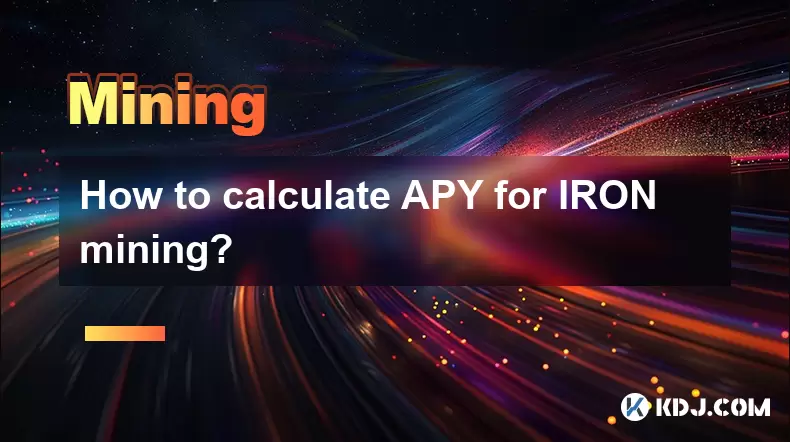
How to calculate APY for IRON mining?
Jul 28,2025 at 09:49am
Understanding APY in the Context of IRON Token MiningWhen engaging in IRON token mining within decentralized finance (DeFi) platforms, Annual Percenta...

What was the highest APY for IRON mining?
Jul 23,2025 at 05:14am
Understanding IRON Token and Its Mining MechanismThe IRON token is a stablecoin that operates within the Iron Finance ecosystem, primarily on blockcha...

What is impermanent loss in IRON pools?
Jul 23,2025 at 09:00am
Understanding Impermanent Loss in the Context of IRON PoolsImpermanent loss is a phenomenon that affects liquidity providers in decentralized finance ...

How to claim rewards from IRON mining?
Jul 23,2025 at 02:21pm
Understanding IRON Mining and Reward MechanismsIRON Finance operated as a decentralized finance (DeFi) protocol on the Polygon and Binance Smart Chain...

How to claim rewards from IRON mining?
Jul 29,2025 at 05:07am
Understanding IRON Mining and Reward MechanismIRON is a dual-token system designed to stabilize the value of a synthetic asset through a combination o...

IRON mining tutorial for beginners
Jul 27,2025 at 12:01am
What Is IRON and How Does It Work in the Cryptocurrency Ecosystem?IRON is a cryptocurrency token that operates on the Binance Smart Chain (BSC) and is...

How to calculate APY for IRON mining?
Jul 28,2025 at 09:49am
Understanding APY in the Context of IRON Token MiningWhen engaging in IRON token mining within decentralized finance (DeFi) platforms, Annual Percenta...
See all articles

























































































